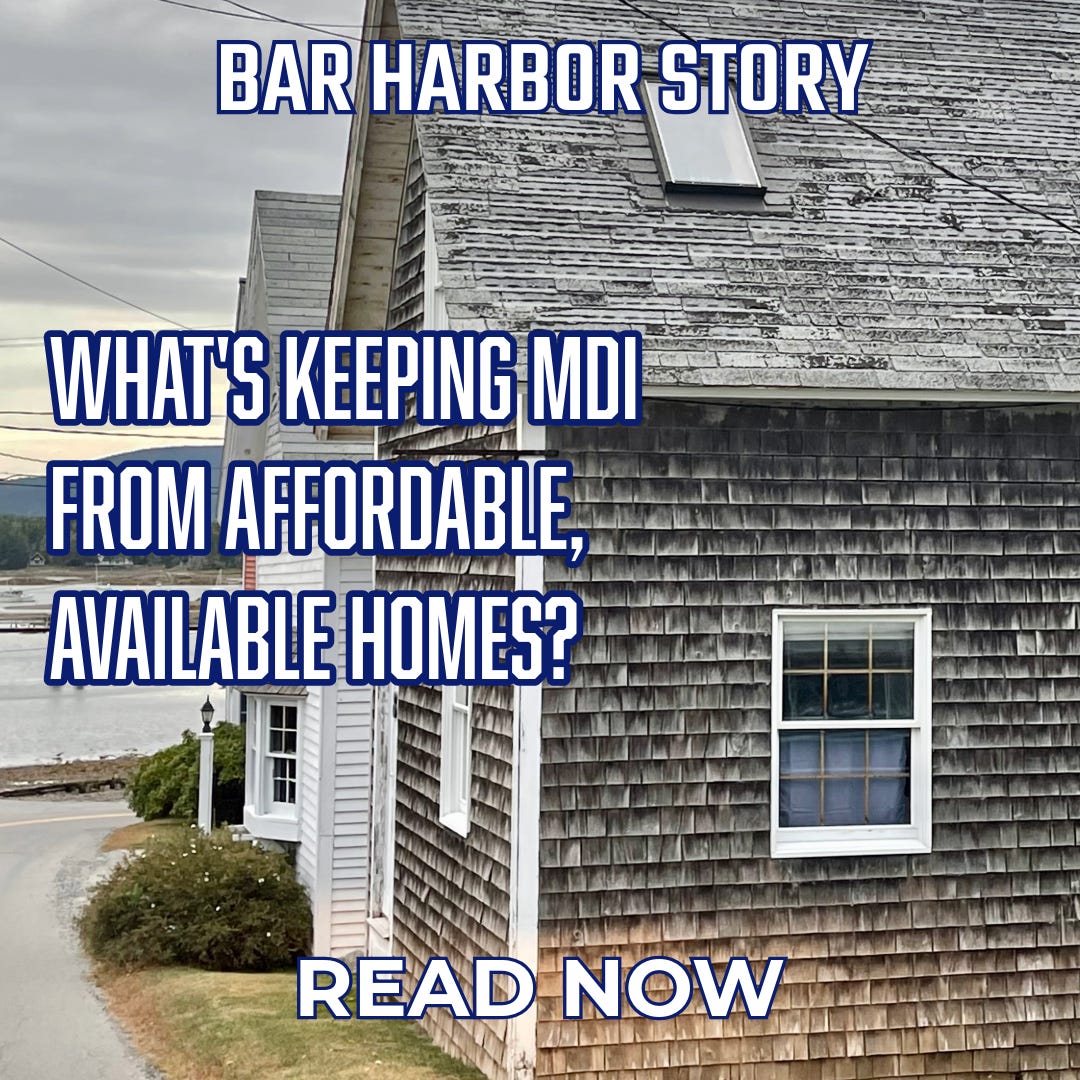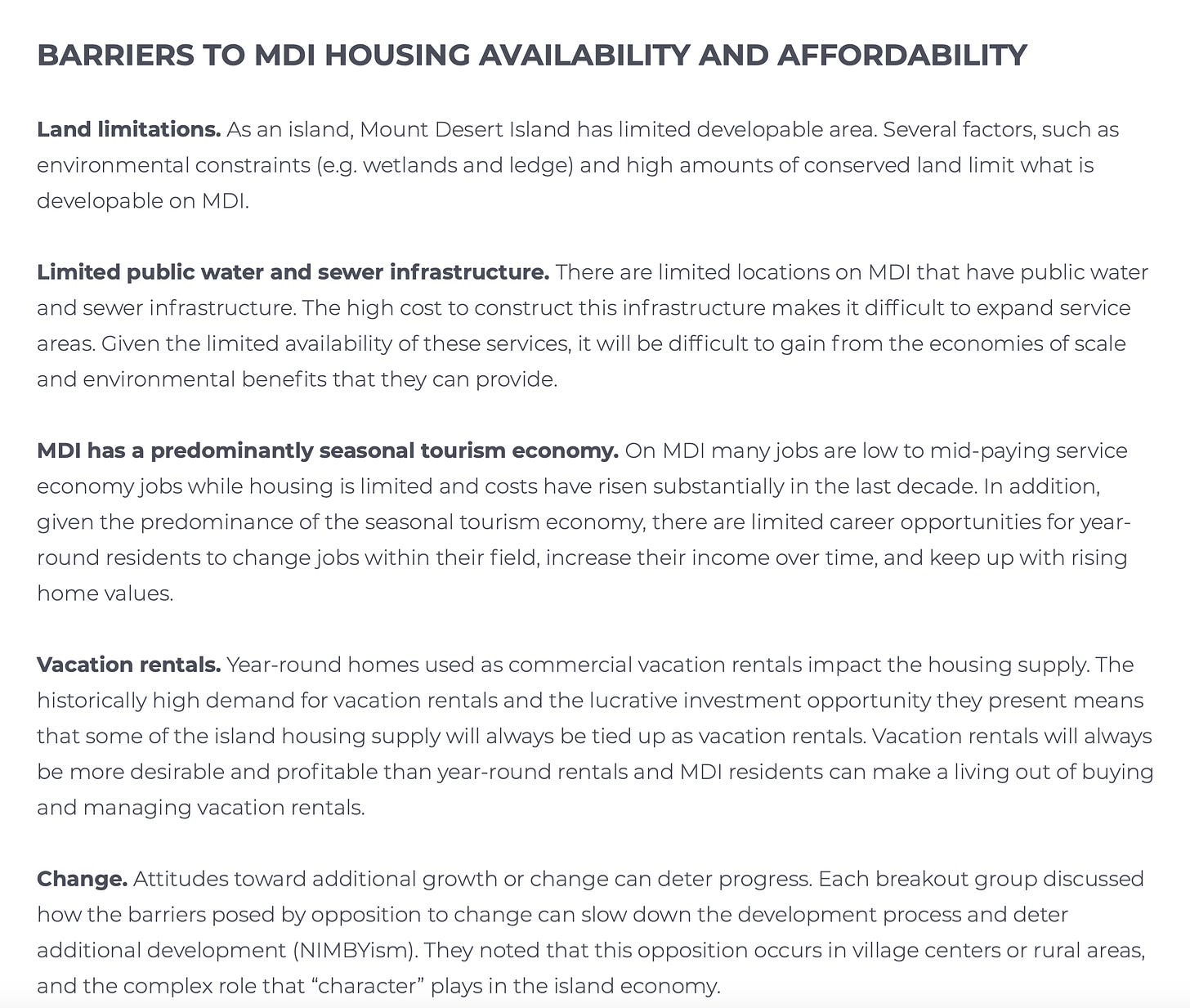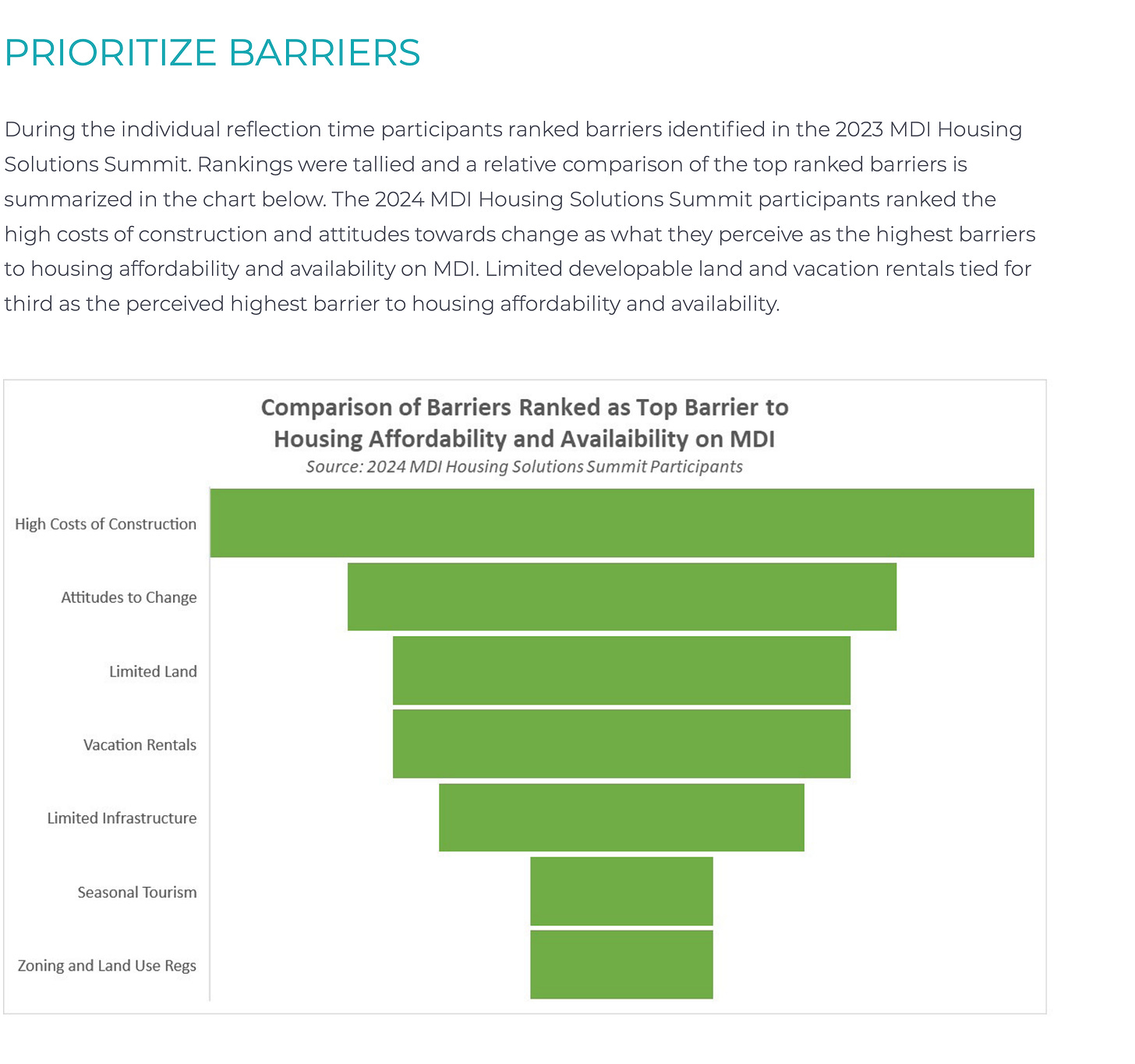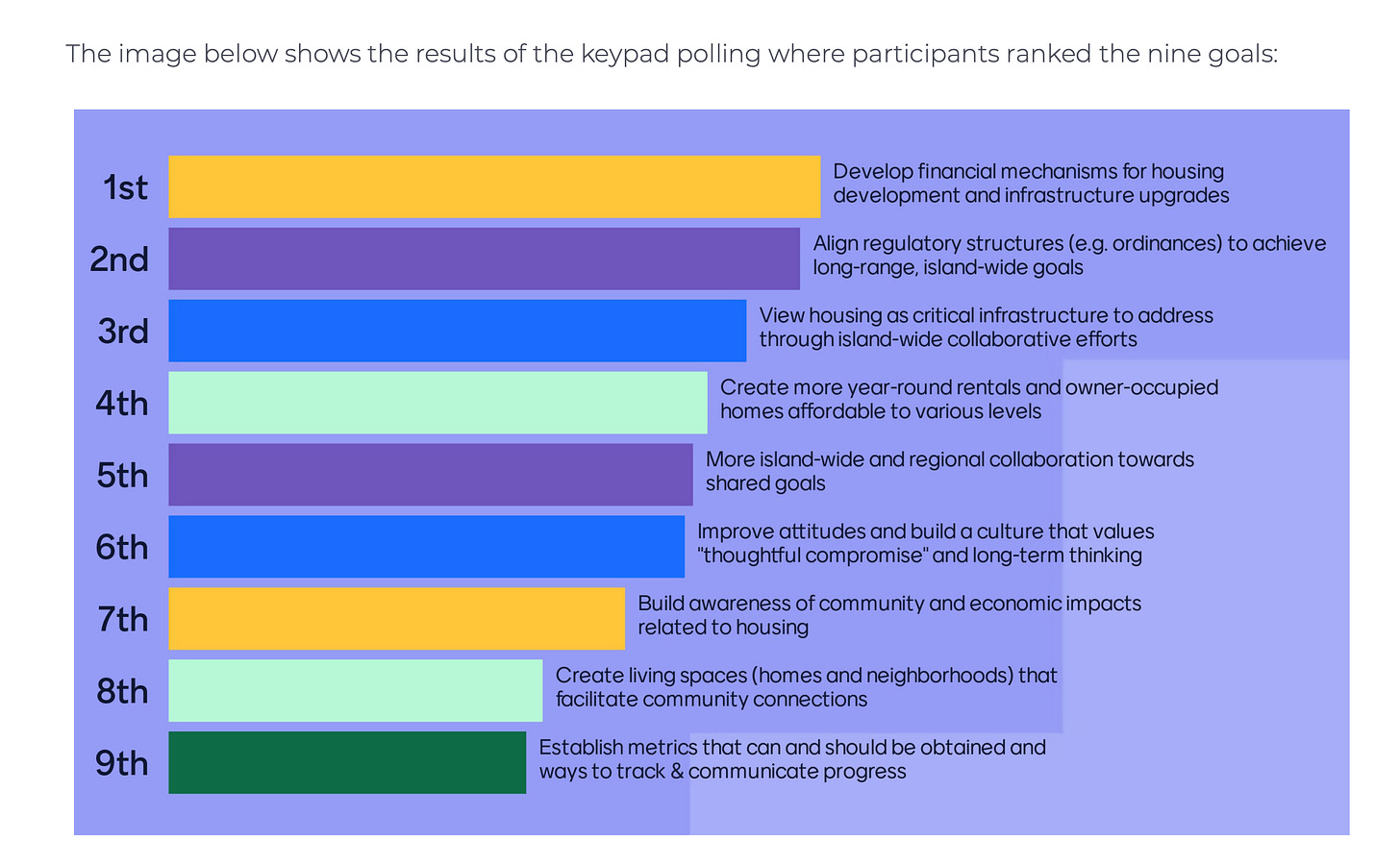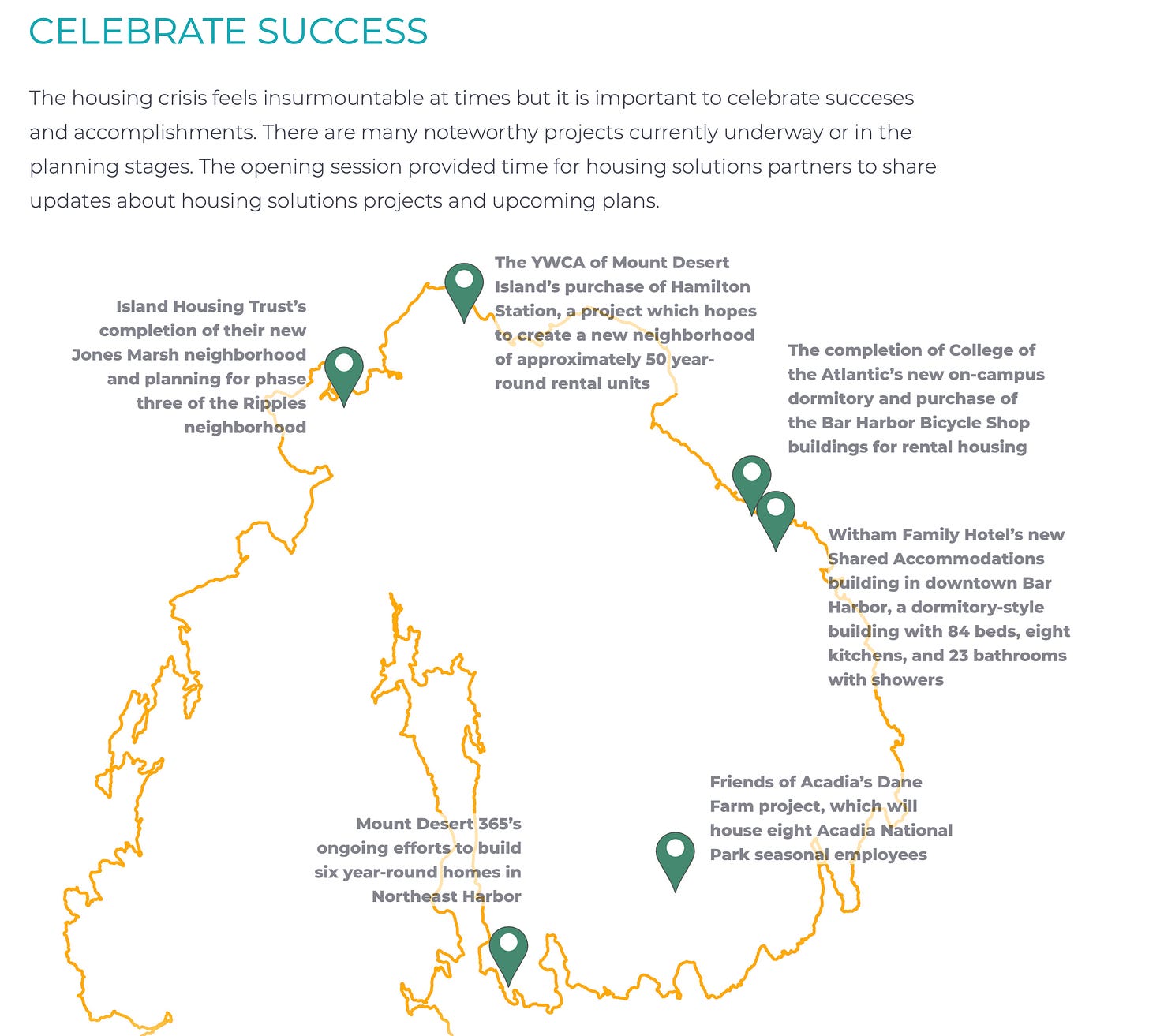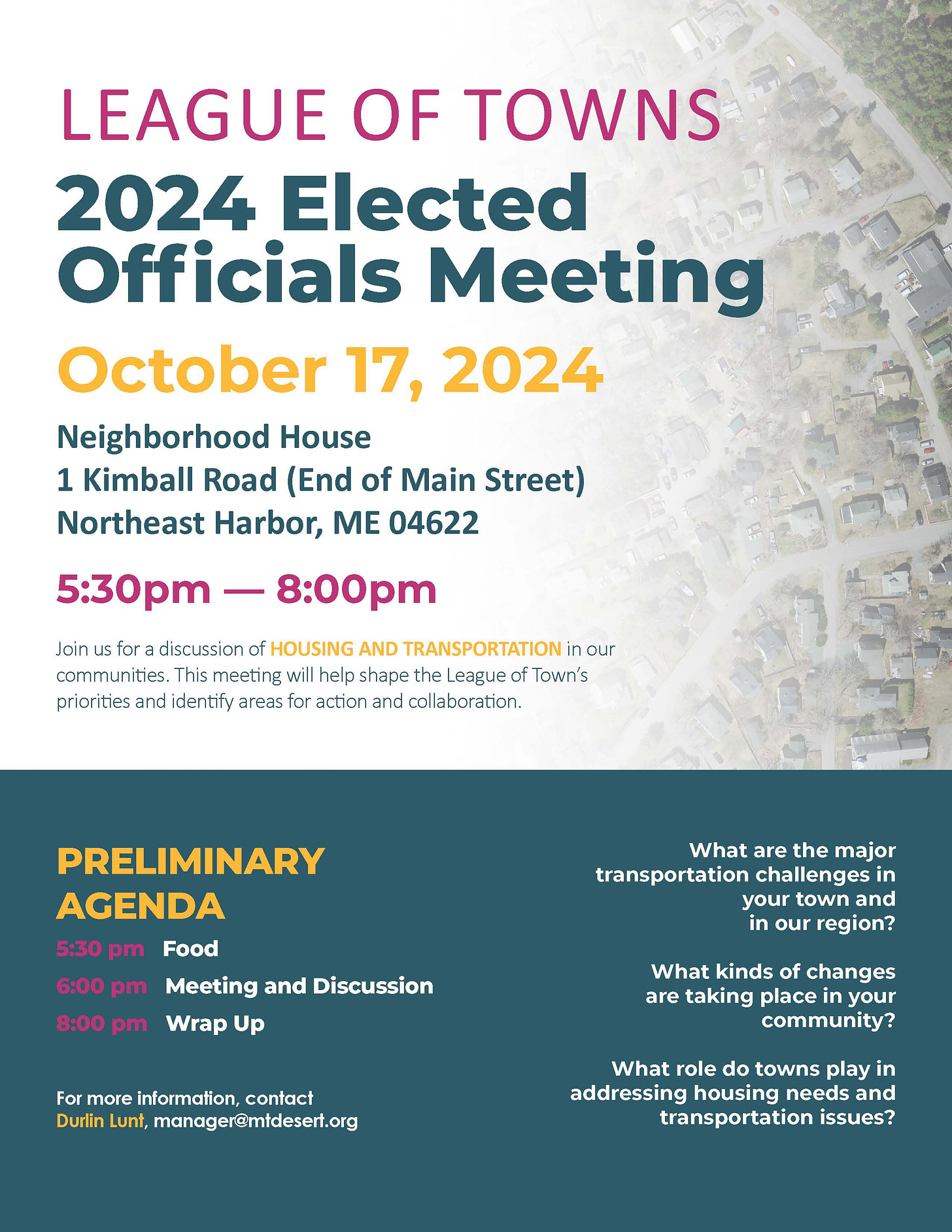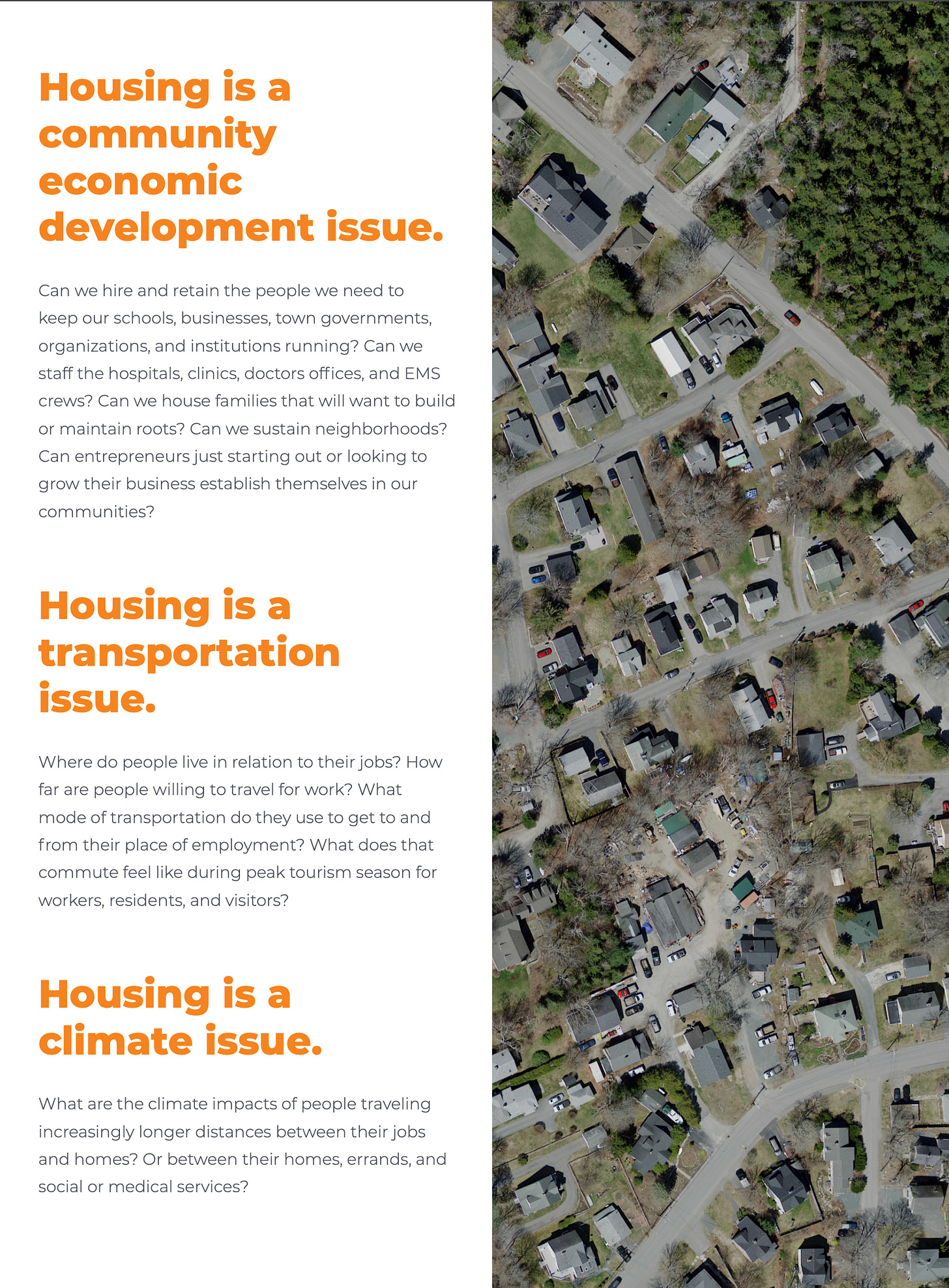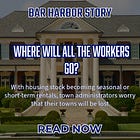What's Keeping MDI From Affordable, Available Homes?
The Bar Harbor Story is generously sponsored by First National Bank.
BAR HARBOR—A collaborative report detailing the issue of finding affordable, available homes on Mount Desert Island has hit the internet and it’s saying what a lot of people have been talking about, too: housing issues are complex. Those issues aren’t easy fixes, but that doesn’t mean that trying to get more affordable and available homes isn’t imperative. It also doesn’t mean that people and groups aren’t trying to find ways to help.
The report was created by the MDI Housing Solutions Summit, which is one of the collaborative efforts of the MDI Housing Solutions Initiative and is a project of The Musson Group and Island Housing Trust with funding from the Maine Department of Economic and Community Development (DECD), Housing Opportunity Program (HOP). The summit was the second of its kind and by invitation.
The 18-page report frames housing as a transportation issue, an economic development issue, and as a climate issue.
The report is the result of work from the second MDI Housing Solutions Summit. That summit happened at the MDI Biological Laboratory on March 29.
KEY BARRIERS
One of the report’s major take-aways was about the barriers to getting more homes on Mount Desert Island.
Those attending identified land limitations, limited infrastructure, seasonal tourism economy, vacation rentals, and attitudes toward change as barriers to housing availability and affordability. Homes used only during the summer season were not identified as a factor in the report. Regulations for building and the high cost of construction were mentioned.
The group then prioritized the barriers to housing affordability and availability. The high cost of construction was considered the top barrier, followed by attitudes to change and limited land.
According to a report in late December 2022 issued by the Bar Harbor Comprehensive Planning Committee, population increases can be constrained by limited space able to be developed, costs of living, and the costs to build.
BIG GOALS
The group defined nine goals:
Improve attitudes and build a culture that values thoughtful compromise and long-term thinking;
Create living spaces (homes and neighborhoods) that facilitate community connections;
Build awareness of community and economic impacts related to housing;
View housing as critical infrastructure to address through island-wide collaborative efforts;
Align regulatory structures (e.g. ordinances) to achieve long-range, island-wide goals;
Create more year-round rentals and owner-occupied homes affordable to various income levels;
Establish metrics that can and should be obtained and ways to track and communicate progress;
Develop financial mechanisms for housing development and infrastructure upgrades;
More island-wide and regional collaboration towards shared goals.
Participants ranked developing a financial mechanism for housing development and infrastructure upgrades as a top priority.
“Like many areas across the country, housing is increasingly expensive on MDI and in the Acadia region. This is due to a variety of factors, including market dynamics, regulatory forces, the high costs of construction, inflation, labor shortages, residual fallout from supply chain issues created during the COVID-19 pandemic, and low interest rates during the pandemic spurring a surge in purchases of additional homes. Mount Desert Island faces additional pressures due it its desirable location, limited land availability, limited year-round rental options, limited public infrastructure, and a historically hot second-home market and, now, short-term rental market. Since 2022, rising interest rates have further exacerbated the issue, making available housing even more expensive,” the report reads.
FEDERAL AND STATE EFFORTS
According to an October 2023 report by the state, Maine needs to build 76,000 homes and build them by 2030. For Bar Harbor, a report by RKG says that number locally is 616 (housing units) by 2033.
U.S. Sen. Angus King brought the problem to the federal government last week and introduced the Farmhouse-to-Workforce Housing Act. The bill is intended to expand the Housing Preservation grants program. In that program, individual home owners can’t apply, but states, towns, and nonprofits can The hope is that this expansion will help people with rural homes create rental housing on the property that they already own.
This could occur by creating an accessory dwelling unit on the land. It could also happen by putting an apartment in a building that already exists.
Building costs money. Contractors can be hard to find.
The grants in the program aren’t used a lot, King’s office has stressed. Low- and medium-income property owners could receive grants of up to $100,000 to create rental housing, which must be used as such, for at least five years.
On a state level, Maine’s L.D. 2003, makes it so that an accessory dwelling unit can be placed on residentially-zoned property.
Across the country, the National Park Foundation and National Park Service announced a $40-million gift to help with employee housing at Yellowstone National Park.
According to the NPF, “The new investment made possible by donors who wish to remain anonymous will fund more than 70 new modular units to address the critical shortage of employee housing at the park.”
SUCCESSES!
Under its key take-aways, the report mentions celebrating successful projects, which it includes as the Jones Marsh neighborhood, the YWCA MDI’s current Hamilton Station; dorms at College of the Atlantic and its purchase of the Bar Harbor Bicycle Shop site, which had already been used for housing; the Witham Family Hotel’s shared accommodations building; Friends of Acadia’s Dane Farm project for Acadia National Park seasonal employees; and Mount Desert 365 Heel Way project to build year round homes in Northeast Harbor.
There have been other commercial ventures that do not involve nonprofits and one-spot home builds as well.
LEAGUE OF TOWNS
The Housing Solutions Initiative isn’t the only collaborative effort looking at the intersections of housing and transportation.
The League of Towns’ elected officials meeting on October 17 at the Neighborhood House will also focus on housing and transportation in Hancock County communities. The hope is that the meeting will help the league prioritize areas for action and collaboration.
LINKS TO LEARN MORE
Friends of Acadia Housing Projects
A new September report from Maine.
If you’d like to donate to help support us, you can, but no pressure! Just click here.
If you’d like to sponsor the Bar Harbor Story, you can! Learn more here.





